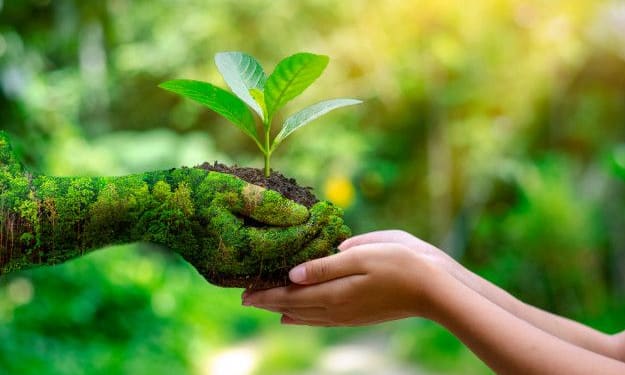What Was Earth Like Before the Dinosaurs?
Millions of years ago, Earth looked very different.

Millions of years ago Earth looked very different. All the continents were fused into one teeming with life both beautiful and terrifying.
When you think of prehistoric times, you might picture a T-Rex rampaging through the jungle with its razor-sharp teeth but even before the Dinosaurs, there were other Giant creatures ruling the Earth. Yeah. Welcome to the Permian period. This Epic started 300 million years ago.
Back then our planet had one supercontinent Pangea surrounded by a world ocean called Panthalassa. The Permian period began at the end of an ice age when temperatures were much cooler than today. Then during early Permian days, Earth warmed to a lush environment with a diversity of plants and a rapid evolution of insect and animal life.
Only as you probably know everything is ever changing on our Blue Marble, over the next 50 million years, Earth kept growing hotter and drier. Eventually, the most deadly event in the history of our planet, wiped out nearly everything that ever lived here.
Scientists call this event the great dying and it was the most catastrophic mass extinction event the Earth has ever seen and the Earth has seen five of them but before we get to all this Doom and Gloom, let me take you on an Epic Journey.
Back in Time, here in the Permian period some of the most incredible species that roamed our young Planet are about to emerge. If you could time travel nearly 300 million years into the past, you'd land smack dab in the middle of the supercontinent Pangea.
Earth's smaller Continents would have just finished colliding with each other to form this enormous land mass taking up one third of the planet's surface. There was likely less oxygen in the air than there is now, but it still might be able to breathe. Oh and bring a jacket because it would likely be chilly with some areas averaging no more than a Brisk four degrees Celsius but don't worry things will soon start heating up.
By the end of the early Permian, the Ice Age was on its way out and Pangea was becoming a lush world. Plants and Animals started to thrive. This was a Volcanic World violent eruptions that changed the climate, shaped the landscape and paved the way for evolution.
When Giant swamp forests began drying out, plant life had to adapt and so, 290 million years ago Earth saw the very first seed bearing plants called Gymnosperms. These plants carried seeds on their cones and they spread across the supercontinent like wildfire. The Ancient evergreen forest of the early Permian was hiding something familiar just like today you could find Cicadas and beetles piercing and sucking on the plants and the cutest of them all cockroaches. Only these weren't the Cockroaches you know today. These prehistoric Vermin were gigantic. The size of birds but despite their size cockroaches never ruled prehistoric land and that's good news. Am I right? No, something much more fascinating was roaming Pangea. The now extinct Ancestor of primitive mammals Dimetrodon. This animal was as fascinating as it was terrifying.
Encountering a dimetrodon would be quite a sight to behold. This Ancient Lizard grew to five meters long and weighed 225 Kilograms. It had a large sail running down its spine. Scientists think this sail helped the reptile regulate its body temperature soaking up warmth during the daytime and dissipating excess heat during the cooler nights.
It would walk toward you like a Crocodile and act like a total Menace, Dimetrodon was an apex predator of its time. Watch out for a mix of sharp and flat teeth that would slice you open and grind you up.
In the middle Permian period other mammal-like reptiles took over the planet, the rap SIDS they had strong jaws with sharp teeth and a somewhat upright stance thanks to their legs being situated underneath their bodies.
The rapid reptiles varied from the five meter long likely omnivorous Deuterasaurus to the five times smaller meat-eating Lycanops. You could beat plenty more thoraxids.
If you stuck around for another 20 million years during the middle Permian period, Earth kept getting hotter the average global temperature on Pangea grew to about 25 degrees Celsius and volcanoes were spitting greenhouse gases out into the atmosphere.
Due to the changing climate sea levels were shifting but marine life found ways to thrive. If you were to take a dip in the prehistoric super ocean, you'd be swimming alongside Ancient Sharks and Bony primitive Fish, many more complex marine species came and went as the environment kept changing in the late Permian period.
You could have a friendly encounter with another Reptile Listrosaurus. These looked like a cross between a Lizard and a pig but unlike all the scary prehistoric Monsters out there, Listrosaurus was a herbivore. It was just one meter long and had powerful front legs for burrowing. Soon another cute mammal-like lizard evolved the synodont. The synodont looked like a giant rodent. It was about one meter long, had whiskers and fed on small animals and insects.
Now during this time, something bad was brewing in the air a large amount of volcanic activity was displacing oxygen from the atmosphere. Scientists think there was as little as 10% oxygen in the air. Compare that to 21 today, you'd have a hard time breathing in that environment and the temperature kept rising and rising with an average temperature of about 28 degrees Celsius.
This Lush prehistoric world was turning into an oven. All good things must come to an end and sadly this period came to a particularly brutal one. About 252 million years ago, about 90% of all plant and animal life was wiped out.
This tragic moment is called the Great dying and it was Earth's most devastating mass extinction event. Scientists still debate what caused this catastrophic Extinction.
Most theories suggest it was the result of explosive volcanic activity as huge volcanic eruptions swept the continent massive amounts of Ash were unleashed into the atmosphere, so much Ash that it blocked out most. If not all of the incoming sunlight and with no sunlight, global temperatures dropped suddenly plants couldn't perform their photosynthetic processes and died off and without plants the very basis of their food chain animals soon followed.
Things got worse before they got better because of all the carbon dioxide, emitted during the volcanic eruptions, global temperatures rose again and not just to where they were but higher much higher and this caused the super ocean to lose most of its oxygen and unable to breathe.
A majority of the Permian sea animals, perished eventually over 95% of marine species and more than 70% of land animals became extinct. This mass extinction event could make you sad enough to want to bring back all the animals that have ever gone away, dinosaurs too.
Like, Share and Subscribe for more stories like this.
Thank you Reading.






Comments (1)
Very Interested for more